The History of Wristwatches
Sun Dials and Water Cleps
The wristwatch history started hundreds of years ago. The sun's height has long been sufficient in European latitudes to determine the time of day. The Egyptians designed the first sundials. After crossing Greece, the idea came to Rome: the oldest Roman sundial, installed in the 3rd century BC. J.C. was booty taken from the Greeks. It was delayed for 100 years until it was noticed that it indicated the wrong time.
Are you wondering when the first wristwatch was invented?
The appearance of modern watches reveals the outward appearance of old sundials: the round disc has become the dial, and the fine shadow that gave the time has given way to the hand.
However, between the two, clepsydra or water clocks also appeared. In the third century BC, they measured time in relation to the water level in the bowl, thanks to the regular flow of the liquid. J.C. Ctesibios, a Greek hairdresser, had already built a clepsydra with a dial and a needle. In Socrates' time, water clocks were used in courts to shorten the speaking time of overly boring speakers.
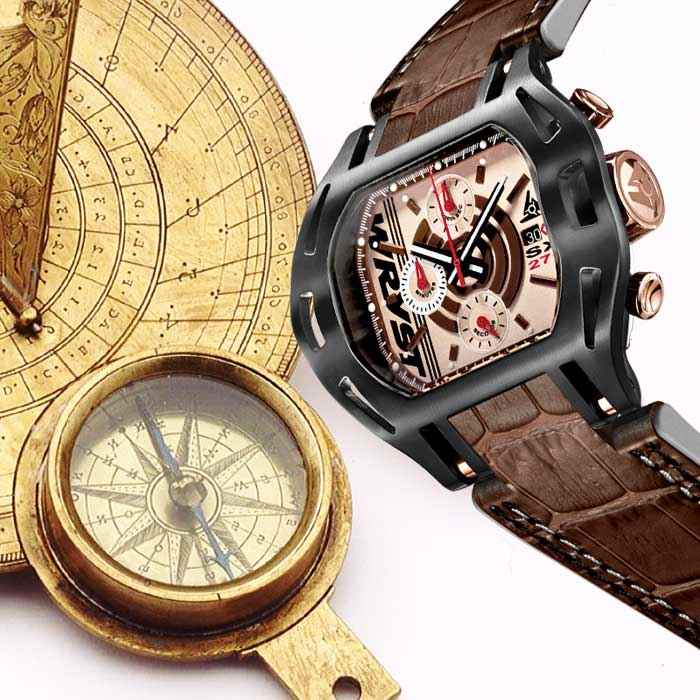
MENS LEATHER WRISTWATCH FORCE SX270
First mechanical watches
The idea of designing a portable time measuring instrument, the precursor of the wristwatch, and the phenomenon are not new: there were already small portable sundials in ancient Rome.
In Germany, monasteries were mainly interested in perfectly functioning clocks. The Benedictine Hildemar even declared that “no prayer can be reasonable if not precisely regulated." In the tenth century, the candle clock was invented in England: a candle indicated the time by being consumed.
The first mechanical clock, driven by stone weights, was built around the 10th century. However, it was not until the 12th century that the builders of astronomical instruments made the first usable cog clocks. Around this time, the word "watchmaker" appeared, denoting the profession.
Watchmaking techniques also developed in Asia. The Chihois had satisfactorily functioning water clocks since the Middle Ages. In the 6th century, they were already supplying these instruments to Japan.
The construction of clocks already involves knowing and understanding certain notions about time. What is a die? What is a minute? However, these are Western temporal motions. In Asia, another system was in force for a long time. Indeed, night and day were each divided into six sections. In summer, the days were longer, and consequently the segments of the day too; conversely, in winter, they were shorter. The horrors required to indicate this phenomenon were complex works of art.
Pendulum and escapement
In Europe, the much simpler 24-hour day was in shape; with it, the 12-hour clock was also uncomplicated. Initially, It was enough to animate a wheel that turned around its axis without stopping twice a day to tell the time. Putting the wheel in motion was not difficult: it was enough to wind a weight attached to a cord wrapped around the wheel's axis. The problem was to break the system so that it did not unroll suddenly.
In the thirteenth century, monumental mechanical clocks appeared in Europe, and then astronomical clocks for large churches appeared in the fourteenth century. Dante also described one of his hor Oges around 1320 in the Divine Comedy. Therefore, it was more and more common practice to equip church steeples with clocks, most of them bearing a chime, not only to indicate the time of the village but, above all, to indicate with precision the time of religious services.
These clocks, animated by weights, worked amazingly precisely. Unfortunately, we do not know exactly how the first watchmakers succeeded in breaking their clocks with friction escapements to have a stable operation (which would later be achieved by the balance wheel and modern escapements).
Galileo Galileo Galileo Galilei invented The pendulum in the 16th century, but it was perfected by the astronomer Christian Huygens who filed a patent application. Since then, he has been wrongly credited with the invention of the pendulum. The idea is brilliant: the pendulum oscillates, and it is only with each tick or tock that the clock's gear can turn one more notch.
The beginnings of watch production
In the 16th century, a renowned watchmaking craft emerged in Central and Western Europe. Its centers were Augsburg and Nuremberg, Switzerland, Geneva, England, and London in Germany. However, the Thirty Years' War caused Germany to fall considerably behind. Switzerland and England then took the lead in nascent watchmaking production.
However, at the war's end, a new German watchmaking center developed in the Black Forest, near Lake Titisee, notably with the manufacture 1640 of the first wooden clock. On many farms in the Black Forest, skillful peasants built clocks, taking advantage of the long winter months to earn some money. In 1850, a Grand Ducal school of clockmaking was even created in the town of Furtwangen.
Portable clocks
The talented artisans of large clocks were soon taken up in a smaller format. The massive pocket clocks called "Nuremberg Eggs" were already famous in the sixteenth century.
Technical discoveries, such as the tensioned steel spring, have been used as a source of energy since the end of the 15th century and the beginning of the 16th century. These discoveries made it possible to manufacture smaller and more portable clocks.
The development of these small 16th-century oval clocks, the Nuremberg Eggs, using a known spring mechanism, was admittedly attributed to the Nuremberg clockmaker Peter Henlein (c. 1479-1542). Still, their manufacture could not be completed until the mid-16th century, after his death. Therefore, the invention of the pocket watch cannot be really credited to Henlein.
At that time, Switzerland already had many very experienced watchmakers. In the villages of the Swiss Jura located between Geneva and Basel, a real hub of Swiss watchmaking developed, and the town of La Chaux-de-Fonds became the center of the country's watch production.
On the high seas, we needed chronometers to guarantee the safety of navigation. It seems evident that England, a great maritime power, actively encouraged the nascent watchmaking production and exercised hegemony in this field. In the 16th century, the English ceded their supremacy in producing small clocks to the Swiss. The country then had more watch factories than England. Germany was not left out either. In 1767, Margrave Charles Frederick of Baden set out to launch the jewelry and watchmaking industry in Pforzheim, Germany. He, therefore, founded a watch factory in the orphanage in Pforzheim. However, this city did not establish itself in the watchmaking market until the 20th century.
In the 19th century, the clockmaker Ferdinand Adolph Lange (1815-1875) succeeded in building a watch industry in the town of Glashütte thanks to his business skills and the targeted support of the poor townspeople.
Industrial production of transportable clocks
However, industrial production of portable clocks did not begin until the 19th century. There was already a timepiece, but it was not produced in series. These early wristwatches served as jewelry and had only an ornamental role, like bracelets, or were hung from a chain on the wrist. The cases were round or oval, and the mechanism was wound up using small keys.
The first real functional watch appeared in 1880. The German navy ordered them from the Swiss manufacturer Girard-Perregaux. At the same time, luxury watches for men had also developed in Switzerland and were very successful, especially among American women.
However, the wristwatch still fails to impose itself. At the time, we preferred to wear pocket watches hung on the wrist. Some manufacturers made their pocket watches so they could be worn directly on the wrist without using a chain.
Various patents were filed, designed only to be worn on the wrist, as a few far-sighted manufacturers, such as the Swiss brand Eterna in 1909, recognized the economic potential of this type of watch. Hans Wilsdorf was one of the forerunners. He had left Kulmbach and Bavaria to sell clocks in London. He then bet on this new wearable object, and, in 1908, he was already selling a considerable number under the name "Rolex." He bought his movements in Switzerland, then moved to Geneva shortly after finding his watch factory. He was the first to obtain chronometer certificates for his achievements, which is almost sensational for these little clocks.
Today, Wilsdorf is considered the rightful father of chronometers. Many of which already had, in addition to the hands indicating the hours and minutes, a second hand for the seconds, either central or on a small dial, called today, in most cases, "small seconds."
The first chronograph appeared around 1919. In the United States, attractive wristwear timers were already offered around 1913. In addition, during World War I, they were indispensable companions for soldiers at the front. The Swiss watch companies were the quickest to react to the sharp increase in demand at war.
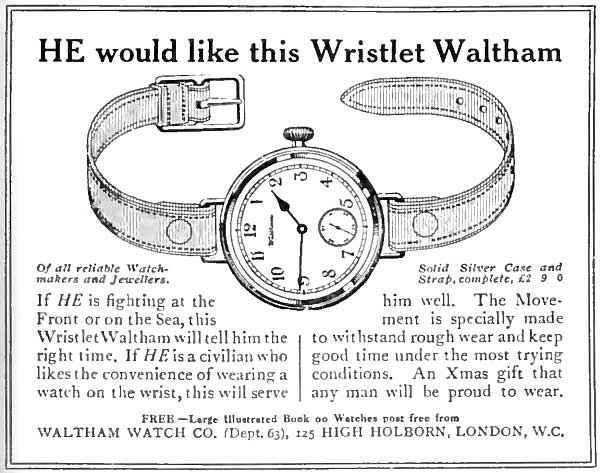
The appearance of watches changed in the 1920s
If they still recall at the beginning, the pocket watch, new artistic creations sometimes original, were imagined rotating scales in the place of the hands, dials raised in the middle, an indication of the phases of the Moon, and various other details came to enrich the dial. The design included almost all of the elements that are still found today.
Over time, the movements became increasingly complex. Watchmakers entrusted with wristwatches to clean, check, or repair them were increasingly in demand. When the quartz watch took hold of the market in the 1970s, it sparked a great deal of controversy. Many watchmakers profited from this new generation of less complicated, less expensive, and often more precise watches. In contrast, others preferred to devote themselves exclusively to the mechanical timers, carefully made by hand.
The challenge of measuring time
Through the centuries following the advent of agriculture, investigations, and experiments have led to the creation of smaller and handier instruments able to display time ever more precisely. The water clock, or clepsydra, has used water to indicate periods since at least 2000 BCE. Sundials display the hours using their gnomon's shadow- usually, a stick fixed on a dial. From the incense timer and the first wooden movements all the way to the atomic clock, a lot of options have been explored.
As previously stated, time measurement is intimately connected with observing the stars and their motion. Humans have tried rapidly to invent machines that reproduce their movements. Indeed, creating a minor system showing how the planets move is the necessary precursor to a machine able to produce the passing of time in a structured way. The first was the Antikythera mechanism found at the beginning of the twentieth century in a shipwreck close to the Greek island of the same name. Created in about 200 BCE, it was the first geared mechanism to reproduce celestial motion and predict astrological positions related to an existing calendar.
Hundreds of years later, during the fourteenth century in Padua, Italy, scientist, and clockmaker Giovanni Dondi invented an animated planetarium that combined a clock movement with the indication of the position of the sun, the moon, the motion of five planets, and the tracking of religious celebrations. This instrument, a fundamental marker in the quest for accurate timekeeping, was important for the quantity of information it provided. It also indicates the high-water mark of the savants of the time and the state of mechanical timekeeping.
The necessity of an invention
As religion has historically been such a strong social force, it is no surprise that the first real clock mechanisms were installed in churches at the end of the Middle Ages. One of the most famous of these is the astronomical clock in Prague; installed in 1410, it displays twenty-one different indications and is the oldest one of its kind still active.
In parallel, watchmakers worked on miniaturizing movements to make the clocks wearable, transforming them into watches. These were close to being jewels because of their adornments, which involved several crafts from the jewelry sector. From the fifteenth to the eighteenth century, watchmaking experienced a scientific boom by discovering all the major watch inventions. Several watchmakers-like Abraham-Louis Breguet, John Arnold, and Ferdinand Berthoud-left their mark on this time mainly by improving the precision of movements.
Watches became more accurate and reliable and integrated more functions. Their production also increased significantly as demand exploded due to the growth of commercial exchange and new means of transportation, such as the train, during the second half of the nineteenth century.
Even though the first wristwatches appeared in the seventeenth century, they only became prevalent at the beginning of the twentieth. They were first used on battlefields as officers knew the exact time to synchronize their actions. Shortly after that, civilian society also began to take note of them. Jewelers helped a great deal transform timepieces into creative and attractive wearable objects by inventing new shapes and finding ways to decorate them. A single gesture-extracting the wrist from one's sleeve-and those around you would immediately know who you are. In short, watches transformed into real luxury objects that would reflect the status of their owners.
At the beginning of the twentieth century, watches were still mechanical, and great improvements were underway to make them stronger, more resistant, and more reliable. Consequently, the demand for eclipsed pocket watches increased. In Switzerland, the switch occurred in 1930 when ticker production outstripped pocket watches.
And then there were complications
As soon as they could, watchmakers extended clocks' functionality and then watched with additional elements called complications. In addition to displaying time, these timekeepers could also, for instance, indicate the phases of the moon or, later, periods counted on-demand with a chronograph function.
A complication is any function beyond the standard indication of time in hours, minutes, and perhaps seconds. Directly powered by the movement, these common and popular supplementary functions can be very numerous. The challenge has been to miniaturize them until they fit in a wristwatch. But the love for the challenge that complications represent also led to the creation of excellent machines. And this quest, which must be taken essentially as a purist's passion for watchmaking perfection, is still going on. For instance, the pocket watch Reference 57260 launched in 2015 is the most complicated portable timepiece with no fewer than fifty-seven complications, all mechanical, of course.
DISCOVER MODERN WATCHES OF THE 21st CENTURY:


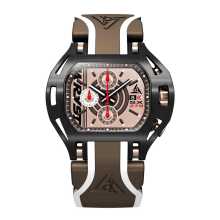
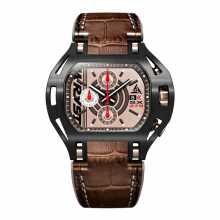
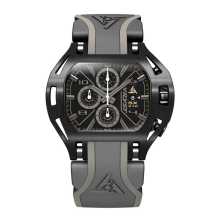
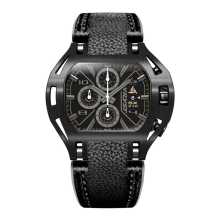
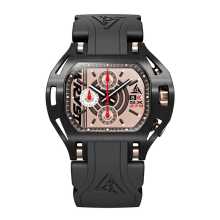
By Igor 12.07.2025 01:37:55
Great to find accurate information and details about the wristwatch and it's history. Brilliant article.
By Caz 06.12.2022 12:41:05
Brilliant demonstration about the story of how the wristwatches came to life. Short and eloquent post thanks.
By Joshua 10.07.2021 09:08:51
Finally a page where you can find a brief history of the wristwatch without all the technical fuss. Great read and thank you for using simple words easy to understand without any knowledge. Nice post ????